|
Books Should Be Free Loyal Books Free Public Domain Audiobooks & eBook Downloads |
|
|
Books Should Be Free Loyal Books Free Public Domain Audiobooks & eBook Downloads |
|
Top Authors |
|---|
|
Book type:
Sort by:
|
By: Casper S. Yost (1863-1941) | |
|---|---|
 Patience Worth
Patience Worth
Patience Worth is an examination of the communications between a seventeenth century woman and a certain Mrs. Curran of St. Louis, in 1913. Contact with the spirit world or parlor trick? If the latter, it was well done: the quick-witted repartee appeared unrehearsed, the language was authentic, the references to English nature and life accurate, although Mrs. Curran had never visited England. Mrs. Curran, herself, was a smart, quick-witted socialite of good repute, unlikely to have been a fraudster... | |
By: Castello Newton Holford (1844-1905) | |
|---|---|
 Aristopia: A Romance-History of the New World
Aristopia: A Romance-History of the New World
Aristopia (published 1895) is truly an alternative history. It is an imagination of how the continent of North America might have developed if one man with the vision, altruism and determination to build a state for the benefit of all its people had been in the happy position of having wealth enough to make his dream a reality. It is an interesting book which deserves its place in literary history largely for being the first novel-length example of its genre. It is written, not as a novel, but as unvarnished history... | |
By: Catharine Parr Traill (1802-1899) | |
|---|---|
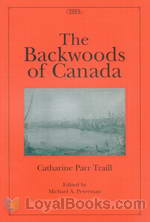 The Backwoods of Canada
The Backwoods of Canada
The writer is as earnest in recommending ladies who belong to the higher class of settlers to cultivate all the mental resources of a superior education, as she is to induce them to discard all irrational and artificial wants and mere useless pursuits. She would willingly direct their attention to the natural history and botany of this new country, in which they will find a never-failing source of amusement and instruction, at once enlightening and elevating the mind, and serving to fill up the void left by the absence of those lighter feminine accomplishments, the practice of which are necessarily superseded by imperative domestic duties... | |
By: Catherine Anne Hubback (1818-1877) | |
|---|---|
 Younger Sister
Younger Sister
Emma Watson, the youngest child of six from a poor family, was sent away as a child to be raised by her wealthy aunt and uncle. When her uncle dies and her aunt remarries, Emma returns home to help care for her ailing father and reconnect with her estranged siblings. She quickly must learn how to behave among the less affluent and navigate her way through the affections of many young men vying for her attention. The Younger Sister is the first published completion of Jane Austen's unfinished novel The Watsons. | |
By: Catherine Booth (1829-1890) | |
|---|---|
 Life and Death
Life and Death
Catherine Booth worked hand-in-hand with her husband William Booth to establish a fledgling mission in London, that eventually grew into a global ministry, The Salvation Army. Here she delves into the Biblical and theological foundation of their work and mission. In many ways she was the heart and soul of the Salvation Army and challenges the readers and listeners to a deeper commitment to Christ and his calling. - Summary by Larry Wilson | |
 Aggressive Christianity: Practical Sermons
Aggressive Christianity: Practical Sermons
Catherine Booth was very much partner with her husband, William Booth, in founding the little London mission that would flourish into the global ministry of the Salvation Army. She was not only an organizer but a powerful preacher in her own right. This is a short collection of her passionate, but practical sermons, still full of transforming truth. - Summary by Larry Wilson | |
By: Catherine Carswell (1879-1946) | |
|---|---|
 Open The Door
Open The Door
This award-winning book tells the coming of age story of Joanna Bannerman. Considered largely autobiographical, it shows Joanna with all her complexities and contradictions, some of which are faced by women almost 100 years later. Perfect for those who love sharp and witty novels. - Summary by Stav Nisser. | |
By: Catherine Cate Coblentz (1897-1951) | |
|---|---|
 Blue Cat of Castle Town
Blue Cat of Castle Town
"The mother cat had been quite upset when she first saw the blue kitten. She had looked fearfully then toward the river. For, like all cats, she had heard that a blue kitten could learn the river's song. Any kitten has a hard enough time to find a home for himself. For every kitten must find a hearth to fit his song. But a kitten who listens to the river and learns the river's song has the hardest time of all. Not only must the kitten who sings the river's song find a hearth to fit that song, but he must teach the keeper of that hearth to sing the same song. The river's song is very old. And mortals who have ears to hear and hearts to sing are fewer than few." | |
By: Catherine Chisholm Cushing (1874-1952) | |
|---|---|
 Pollyanna, the Glad Girl: A Four-Act Comedy
Pollyanna, the Glad Girl: A Four-Act Comedy
Miss Polly Harrington is not at all pleased to be taking charge of her orphaned niece - but duty is duty, and that's how Pollyanna Whittier ended up in New England. Cheerful and ever-optimistic, Pollyanna sets out to infect the whole town with her "Glad" game, getting into some trouble along the way! How will strict Miss Polly react to the orphaned cat, dog, and, worst of all, BOY Pollyanna offers as a gift? What will happen when Pollyanna sets out to break into the fairy-tale castle next door and... | |
By: Catherine Crowe (1803-1876) | |
|---|---|
 Ghosts And Family Legends; A Volume For Christmas
Ghosts And Family Legends; A Volume For Christmas
Fifteen ghost stories to hear around the Yule log. "It happened that I spent the last winter in a large country mansion, in the north of England, where we had a succession of visitors, and all manner of amusements—... In short, we began to tell ghost stories; and although some of the party professed an utter disbelief in apparitions, they proved to be as fertile as the believers in their contributions—relating something that had happened to themselves or their friends, as having undoubtedly occurred, or to all appearance, occurred—only, with the reservation, that it must certainly have been a dream... | |
 Night-Side of Nature; Or, Ghosts and Ghost-Seers
Night-Side of Nature; Or, Ghosts and Ghost-Seers
The stories in Volume 1 centre on dreams, psychic presentiments, traces, wraiths, doppelgängers, apparitions, and imaginings of the after-life. Crowe's vivid tales, written with great energy and imagination, are classic examples of nineteenth-century spiritualist writing and strongly influenced other authors as well as providing inspiration for later adherents of ghost-seeing and psychic culture. - Summary by Cambridge University Press | |
By: Catherine Gasquoine Hartley (1866-1928) | |
|---|---|
 Women, Children, Love and Marriage
Women, Children, Love and Marriage
This book contains a number of essays about various subjects pertaining to women, children love and marriage - Summary by ashleighjane | |
By: Catherine Grace Frances Gore (1798-1861) | |
|---|---|
 Mrs. Armytage, or Female Domination
Mrs. Armytage, or Female Domination
Mrs Armytage is a widowed landowner, spirited, independent and very much used to having her own way and exercising total dominance over her family. She is acutely aware of social distinctions, proud of her power and prestige, and stands on her dignity to the point of becoming cold, judgemental and aloof. Her character flaws bring her into conflict with her children when her son Arthur announces his choice of a wife who is very much below their rank, and much will happen before Mrs Armytage learns to repent her behaviour... | |
By: Catherine Helen Spence (1825-1910) | |
|---|---|
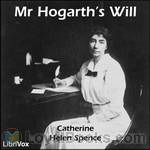 Mr. Hogarth's Will
Mr. Hogarth's Will
Jane and Elsie Melville were raised by their kindly but eccentric uncle, Mr Hogarth who believed that women were just as good as men, and thus gave his nieces a boy’s education. Upon his death, they find that he has left his entire fortune to his heretofore unknown son and left them only a small allowance, expecting them to make their own way in the world using the education he furnished them. Will the girls survive in a world that expects them, at the most, to become governesses? | |
By: Catherine of Genoa | |
|---|---|
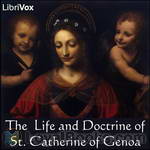 The Life and Doctrine of St. Catherine of Genoa
The Life and Doctrine of St. Catherine of Genoa
Saint Catherine of Genoa (Caterina Fieschi Adorno, born Genoa 1447 – 15 September 1510) is an Italian Roman Catholic saint and mystic, admired for her work among the sick and the poor. She was a member of the noble Fieschi family, and spent most of her life and her means serving the sick, especially during the plague which ravaged Genoa in 1497 and 1501. She died in that city in 1510.In 1551, 41 years after her death, a book about her life and teaching was published, entitled Libro de la vita mirabile et dottrina santa de la Beata Caterinetta de Genoa... | |
By: Catherine Parr (1512-1548) | |
|---|---|
 Lamentation of a Sinner
Lamentation of a Sinner
The Lamentation of a Sinner was written in 1544, the year where Parr took on the role of Regent for a number of months when Henry VIII was fighting wars in France. She writes a general confession of sin and exhortation to holiness. Parr was the first woman to publish a book in English under her own name. | |
By: Catherine Sager Pringle (1835-1910) | |
|---|---|
 Across the Plains in 1844
Across the Plains in 1844
The Sager family, including seven children, set out on the Oregon trail in 1844. Accidents and disease made it a dangerous trip, and both parents died along the way. The orphans made it to the Whitman Mission in Walla Walla, Washington, but their lives were still in jeopardy. In 1847, members of the Cayuse tribe attacked the mission and killed the Whitmans and others living there. Catherine was among those who were taken as hostages, and she survived the massacre. She later wrote about these harrowing experiences in this memoir. | |
By: Catholic Truth Society | |
|---|---|
 Penny Catechism (Catechism of Christian Doctrine)
Penny Catechism (Catechism of Christian Doctrine)
A question and answer format catechism that was the standard catechetical text in Great Britain throughout most of the 20th century. Popularly called the Penny Catechism, as the original version only cost one penny. Various editions of the Penny Catechism were issued through the century and changes were made to the text, particularly following Vatican II. This edition is the pre-Vatican II edition. - Summary by Wikipedia, modified by David Oderberg | |
By: Catulle Mendès (1841-1909) | |
|---|---|
 Fairy Spinning Wheel and the Tales it spun
Fairy Spinning Wheel and the Tales it spun
This is a little volume of old-fashioned fairy tales, collected and rewritten by Catulle Mendès and translated from the French and adapted for an American audience by TJ Vivian. This collection contains some of the most well-known fairy tales, such as the Sleeping Beauty, but also contains some tales which the listener may not be familiar with yet. There is much to discover in these pages. - Summary by Carolin | |
By: Cecil Henry Bompas | |
|---|---|
 Folklore of the Santal Parganas
Folklore of the Santal Parganas
This is an intriguing collection of folklore from the Santal Parganas, a district in India located about 150 miles from Calcutta. As its Preface implies, this collection is intended to give an unadulterated view of a culture through its folklore. It contains a variety of stories about different aspects of life, including family and marriage, religion, and work. In this first volume, taken from Part I, each story is centered around a particular human character. These range from the charmingly clever (as in the character, The Oilman, in the story, “The Oilman and His Sons”) to the tragically comical (as in the character, Jhore, in the story “Bajun and Jhore”)... | |
By: Cecil Warburton | |
|---|---|
 Spiders
Spiders
The mental capacity of spiders; web architecture; spiders that live under water, even though they need air to breath; spiders that mimic ants; spiders that mimic bird droppings; cannibalism; odd spider mating rituals--these are just some of the topics in this lively book about the modes and habits of common spiders, written by a zoologist. - Summary by Sue Anderson | |
By: Cécile Tormay (1875/76-1937) | |
|---|---|
 Old House
Old House
On a snowy winter's evening, Christopher Ulwing returns to his home, known as The New House for the last thirty years. Settled between the Buda hills and the plains of Pest, on the banks of the Danube, the suburb of Leopold has an abandoned feel, but Christopher has been given the task of restoring the castle, to the chagrin of its current resident, his son, John Hubert. At least little Anne is happy to see him and through her constant questioning, Christopher if forced to dwell on the past as he undertakes the renovation over several years. But strife is on the horizon, with revolution, the breakup of the Hungarian Kingdom and the formation of a new republic. - Summary by Lynne Thompson | |
By: Cenydd Morus (1879-1937) | |
|---|---|
 Fates of the Princes of Dyfed
Fates of the Princes of Dyfed
Cenydd Morus's imaginative retelling of tales from the Mabinogion, the great work of Welsh literature first recorded in the 12th-13th century. Written while he was working for the Theosophical Society in California, Morris's version restores the Gods that he believed had disappeared from the written record but must have been present in the oral tradition of the Druid bards. First published in 1914 and republished in the 1970s as the 15th volume in the celebrated Newcastle Forgotten Fantasy Library. - Summary by Phil Benson | |
By: Cesare Lombroso (1835-1909) | |
|---|---|
 Crime, Its Causes and Remedies
Crime, Its Causes and Remedies
Published as the third volume in the Modern Criminal Science Series, Cesare Lombroso, renowned Italian criminologist, collected a wealth of information regarding the incidence, classification, and causes of crime. Crime calendars, the geography of crime, unusual events and circumstances leading to more frequent crime, political motivations and associations of criminal enterprise and an assessment of the real value and effectiveness of prisons and reform programs are all included in this three part volume. - Summary by Leon Harvey | |
 Man of Genius
Man of Genius
Famous criminologist, anthropologist, and psychiatrist, Dr Lombroso, investigated the memetic anecdotal belief that genius is associated with degenerative symptoms, or may even be a version of insanity, and presented his findings as a fascinating and controversial theory that the creative and imaginative celebrities throughout history have also displayed what he termed as "atavistic" symptoms, or defects resembling what is commonly seen in the unwell. Citations of evidence are drawn from a rich variety... | |
By: Chalkley J. Hambleton | |
|---|---|
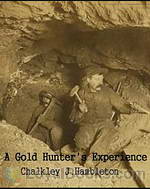 A Gold Hunter's Experience
A Gold Hunter's Experience
“Early in the summer of 1860, I had an attack of gold fever. In Chicago, the conditions for such a malady were all favorable. Since the panic of 1857 there had been three years of general depression, money was scarce, there was little activity in business, the outlook was discouraging, and I, like hundreds of others, felt blue.” Thus Chalkley J. Hambleton begins his pithy and engrossing tale of participation in the Pike’s Peak gold rush. Four men in partnership hauled 24 tons of mining equipment by ox cart across the Great Plains from St... | |
By: Chan Gardiner | |
|---|---|
 Lineman
Lineman
This poem by Chan Gardiner pays tribute to the Linemen working on America's high voltage lines, working in dangerous conditions so that the average citizen can enjoy his time at home. (Summary by David Lawrence | |
By: Charles A. Conant (1861-1915) | |
|---|---|
 Alexander Hamilton
Alexander Hamilton
Alexander Hamilton was a significant figure in the political and economic development of the early United States. He served in the American Revolutionary War and became an aide to General George Washington. He was one of the authors (along with John Jay and James Madison) of a series of essays know as The Federalist Papers, which were written in support of the ratification of the proposed Constitution. Scholars and others still refer to these essays to this day for interpretation of the Constitution... | |
By: Charles A. Higgins | |
|---|---|
 Titan Of Chasms: The Grand Canyon Of Arizona
Titan Of Chasms: The Grand Canyon Of Arizona
This is a 1906 collection of three essays by men famously associated with The Grand Canyon: Charles A. Higgins, John Wesley Powell, and Charles F. Lummis. - Summary by david wales | |
By: Charles A. Siringo (1855-1928) | |
|---|---|
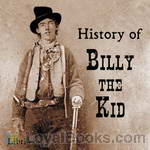 History of Billy the Kid
History of Billy the Kid
A cowboy outlaw whose youthful daring has never been equalled in the annals of criminal history.When a bullet pierced his heart he was less than twenty-two years of age, and had killed twenty-one men, Indians not included.The author feels that he is capable of writing a true and unvarnished history of "Billy the Kid," as he was personally acquainted with him, and assisted in his capture, by furnishing Sheriff Pat Garrett with three of his fighting cowboys--Jas. H. East, Lee Hall and Lon Chambers... | |
 Texas Cowboy; Or Fifteen Years on the Hurricane Deck of a Spanish Pony
Texas Cowboy; Or Fifteen Years on the Hurricane Deck of a Spanish Pony
Charles A. Siringo was an American lawman, detective, and agent for the Pinkerton National Detective Agency during the late 19th century and early 20th century…. After taking part in several cattle drives, Siringo stopped herding to settle down, get married (1884), and open a merchant business in Caldwell, Kansas. He began writing a book, entitled A Texas Cowboy; Or Fifteen Years on the Hurricane Deck of a Spanish Pony. A year later, it was published, to wide acclaim, and became one of the first true looks into life as a cowboy written by someone who had actually lived the life. | |
By: Charles A. Ward (1846-1908) | |
|---|---|
 Oracles of Nostradamus
Oracles of Nostradamus
Charles A. Ward was considered one of the most knowledgeable in his studies of the prophecies of Nostradamus. Ward viewed the prophecies of Nostradamus as predictions that only make sense in hindsight, rather than a tool for predicting future events. This work includes Ward's theories regarding the methods of prediction and his theoretical belief that the predictions were sequential. Ward details only a few of the actual predictions of Nostradamus in his interpretations but attempts to shed light on his theoretical orientation in hopes of making them easier to understand for the reader. - Summary by CJ Plogue | |
By: Charles Adams (1808-1890) | |
|---|---|
 Memoir of Washington Irving
Memoir of Washington Irving
Arguably one of America's greatest writers, Washington Irving is the author of such classics as "Legend of Sleepy Hollow," "Bracebridge Hall," and "Knickerbocker's History of New York." This book is a concise and extremely entertaining biography of this unique author. Note to the listener: There are a couple of typos in this text. Chapter 33 should have been numbered as chapter 32, and there are two chapter 35's. The readers have keep the typos in the reading, therefore, there is no chapter 32, and the two chapter 35's are designated at "the first" and "the second." - Summary by Greg Giordano | |
By: Charles Alexander Eastman (1858-1939) | |
|---|---|
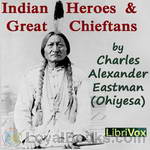 Indian Heroes and Great Chieftans
Indian Heroes and Great Chieftans
EVERY age, every race, has its leaders and heroes. There were over sixty distinct tribes of Indians on this continent, each of which boasted its notable men. The names and deeds of some of these men will live in American history, yet in the true sense they are unknown, because misunderstood. I should like to present some of the greatest chiefs of modern times in the light of the native character and ideals, believing that the American people will gladly do them tardy justice. | |
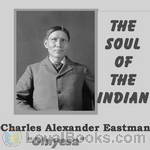 The Soul of the Indian
The Soul of the Indian
"We also have a religion which was given to our forefathers, and has been handed down to us their children. It teaches us to be thankful, to be united, and to love one another! We never quarrel about religion." | |
 Indian Child Life
Indian Child Life
The author was raised as an American Indian and describes what it was like to be an Indian boy (the first 7 chapters) and an Indian Girl (the last 7 chapters). This is very different from the slanted way the white man tried to picture them as 'savages' and 'brutes.'Quote: Dear Children:—You will like to know that the man who wrote these true stories is himself one of the people he describes so pleasantly and so lovingly for you. He hopes that when you have finished this book, the Indians will seem to you very real and very friendly... | |
By: Charles Alexander Eastman (1858-1939) | |
|---|---|
 Indian To-day
Indian To-day
Based in part upon the author's own observations and personal knowledge, it was the aim of the book to set forth the status and outlook of the North American Indian. He addressed issues such as Indian schools, health, government policy and agencies, and citizenship in this book. In connection with his writings, Eastman was in steady demand as a lecturer and public speaker with the purpose of interpreting his race to the present age. | |
 From the Deep Woods to Civilization: Chapters in the Autobiography of an Indian
From the Deep Woods to Civilization: Chapters in the Autobiography of an Indian
From the Deep Woods to Civilization is the sequel to Indian Boyhood. Charles Eastman (Ohiyesa) gives his account of what it was like to transition from the ways of his Inidan life to that of the white man. His father, long thought dead, had converted to Christianity and wished the same for his son as well as receiving education in the white man's school. At the age of 15, Ohiyesa must learn to balance the old familiar life of the American Indian with that of the new in the world of the white man, one of his first acts being the cutting of his long hair and attending school... | |
By: Charles Anderson Dana (1819-1897) | |
|---|---|
 Recollections of the Civil War
Recollections of the Civil War
Recollections of the Civil War records the events that took place during the American Civil war. It forms one of the most remarkable volumes of historical, political, and personal reminiscences which have been given to the public. Mr. Dana wrote these Recollections of the civil war according to a purpose which he had entertained for several years. They were completed only a few months before his death on October 17, 1897. Go to the e-book on this book's catalog page for some great illustrations and an index. | |
By: Charles Austin Beard (1874-1948) | |
|---|---|
 History of the United States: The Colonial Period Onwards
History of the United States: The Colonial Period Onwards
Vol. I: The Colonial Period. Charles Austin Beard was the most influential American historian of the early 20th century. He published hundreds of monographs, textbooks and interpretive studies in both history and political science. He graduated from DePauw University in 1898, where he met and eventually married Mary Ritter Beard, one of the founders of the first Greek-letter society for women, Kappa Alpha Theta. Many of his books were written in collaboration with his wife, whose own interests lay in feminism and the labor union movement (Woman as a Force in History, 1946)... | |
By: Charles B. Cory (1857-1921) | |
|---|---|
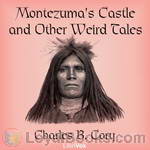 Montezuma's Castle and Other Weird Tales
Montezuma's Castle and Other Weird Tales
This is a collection of weird tales inspired from the natural history expeditions of the author, an independently wealthy bird collector, Olympic golfer, writer of many books on birds of the world, and, as evidenced in these pages, a fine storyteller to boot. | |
By: Charles B. Towns (1862-1947) | |
|---|---|
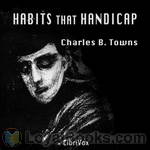 Habits that Handicap
Habits that Handicap
Habits that Handicap is one of three novels about alcholoism and drug addiction written by Charles B. Towns. Towns was an expert on alcoholism and drug addiction who helped draft drug control legislation in the United States during the early 20th century. He also founded the Towns Hospital in New York City, which aimed at drying out the well-to-do patient. | |
By: Charles Babbage (1791-1871) | |
|---|---|
 Passages from the Life of a Philosopher
Passages from the Life of a Philosopher
Some men write their lives to save themselves from ennui, careless of the amount they inflict on their readers. Others write their personal history, lest some kind friend should survive them, and, in showing off his own talent, unwittingly show them up. Others, again, write their own life from a different motive—from fear that the vampires of literature might make it their prey. I have frequently had applications to write my life, both from my countrymen and from foreigners. Some caterers for the public offered to pay me for it... | |
By: Charles Badger Clark (1883-1957) | |
|---|---|
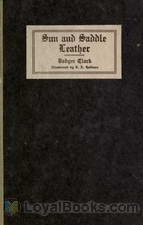 Sun and Saddle Leather
Sun and Saddle Leather
Cowboy Poetry began as a 19th Century Performance Art staged around a crackling campfire, referencing tall tales and personal stories, lost girlfriends, and love of the vast unboundaried West. It was best accompanied by a hot tin cup of boiled coffee, dunked biscuits, and beef jerky. The rhymed couplets were easy to remember, and once the day's drive was done, everybody had a few hours to listen to friends and wonder at the stars. Badger Clark gave voice and record to this unique American folk art, and built on it to express his own creative genius. He was declared the first Poet Laureate of South Dakota, or as he liked to say, “Poet Lariat.” | |
By: Charles Baudelaire (1821-1867) | |
|---|---|
 Flowers of Evil
Flowers of Evil
This is a collection of French poems by Charles Baudelaire, originally titled "Les Fleurs du mal." It was popular in the symbolist and modernist movements of the 19th century, and the poems are about decadence and eroticism. | |
By: Charles Blanden (1857-1933) | |
|---|---|
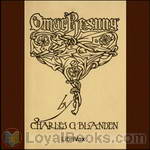 Omar Resung
Omar Resung
Most of the translations of the Rubaiyat of Omar Khayyam have been in verse. However, there have been three notable exceptions to this convention; the French translation by J. B. Nicolas (1867), the English version by Justin Huntly McCarthy (1889) and another English version by Frederick Rolfe (better known as Baron Corvo, the author of Hadrian VII), published in 1903. Charles Blanden (1857 - 1933) belonged to the group known as the Chicago poets, the most famous of which was Carl Sandburg. Unlike his celebrated contemporary... | |
By: Charles Boardman Hawes (1889-1923) | |
|---|---|
 Dark Frigate
Dark Frigate
The frigate Rose of Devon rescues from a wreck in mid-ocean twelve men who show their gratitude by seizing the Rose, killing her captain and sailing toward the Caribbean where they hope to plunder Spanish towns and galleons. Mistaking an English man-of-war for a merchantman, they are captured and brought back to England for trial. Only one, an English lad, Philip Marsham, a member of the original crew of the Rose, is acquitted; and he, after adventures in the forces of King Charles, tires of Cromwell's England and sails for Barbados once more on the Rose of Devon... | |
By: Charles Bradlaugh (1833-1891) | |
|---|---|
 Ancient and Modern Celebrated Freethinkers
Ancient and Modern Celebrated Freethinkers
| |
 Theological Essays
Theological Essays
Charles Bradlaugh was an English political activist and atheist who founded the National Secular Society in 1866. In the 23 "Theological Essays" collected here, he discusses his views on various topics such as whether man has a soul and if there is a God; who was Jesus Christ and the Apostles. He also deals in depth with various books of the Bible, gives an overview of the history of heresy, and tries to answer the question when the Gospels were written. | |
By: Charles Brockden Brown | |
|---|---|
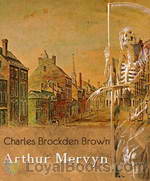 Arthur Mervyn
Arthur Mervyn
Kicked out of his parental home by his scheming young stepmother, a young country boy, Arthur Mervyn arrives in Philadelphia. Here he finds the city in the throes of a deadly yellow-fever epidemic. However, he finds a small job as a clerk and is determined to make his way in the world. He soon discovers that his employer is a con man and a murderer. One night, Arthur helps him dispose of a body in the river. While they're struggling with the corpse, the employer is swept away by the current... If you haven't encountered American Gothic before, Arthur Mervyn by Charles Brockden Brown is a great introduction to this genre... | |
By: Charles C. Bombaugh (1828-1906) | |
|---|---|
 Stratagems and Conspiracies to Defraud Life Insurance Companies: An Authentic Record of Remarkable Cases
Stratagems and Conspiracies to Defraud Life Insurance Companies: An Authentic Record of Remarkable Cases
A thorough treatise on different ways people have tried to defraud life insurance companies, with many entertaining examples. The present . . . volume is . . . commended as a trustworthy record to those for whose use and reference it is primarily intended—life insurance companies and agents, medical examiners, insurance lawyers, and medico-legal experts. . . . [It] is not confined to the exposure of the cunning contrivances and artifices of this class of schemers and plotters; it includes picturesque... | |
By: Charles C. Burleigh (1810-1878) | |
|---|---|
 Thoughts on the Death Penalty
Thoughts on the Death Penalty
This 1845 publication, written by a prominent reformer of the day, argues against capital punishment from several perspectives, including historical, philosophical and biblical arguments. It is broken into 3 chapters: Expediency, Justice, and Sacred Scriptures . Burleigh frequently references and argues against George B. Cheever, a prominent death penalty advocate of the time."If it shall thus be the means of helping on in a humble way the progress of that humane reform whose principles it advocates;... | |
By: Charles C. Nott (1827-1916) | |
|---|---|
 Mystery of the Pinckney Draught
Mystery of the Pinckney Draught
Charles Pinckney, member of the South Carolina legislature, Confederation Congress, U.S. Congress, and notably the Constitutional Convention of 1787, may have been regarded by some as perhaps the true author of the U.S. Constitution, although most likely James Madison would vehemently argue the point. This book investigates what may, or may not have happened to the draft of the Constitution which was drawn up by Charles Pinckney and submitted to the Constitutional Convention in May of 1787, and how (or if) it differed from the Constitution which was adopted... | |
By: Charles Clark Munn (1848-1917) | |
|---|---|
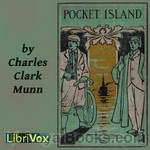 Pocket Island
Pocket Island
Along the coast of Maine are littered thousands of small islands. One such, named 'Pocket Island' by the locals was so called because of a pocket formed twice daily by the waning of the tides. The coast of Maine holds many secrets and legends, and Pocket Island was no exception. Subtitled "A Story of Country Life in New England", this story holds such varied and fascinating glimpses into the lives of a few individuals, and is not limited to merely a story of ghosts, of war, of barn dances, friendship, tales of rum-runners, smugglers, and seafarers... | |
By: Charles Cole Hine (1825-1897) | |
|---|---|
 Great Chicago Fire
Great Chicago Fire
Historical information relating the nature, extent, and consequences of The Great Chicago Fire of 1871, the insurance losses, and the relief costs. A brief interlude of comic relief is inserted midway in the form of a poem regarding the event.. | |
By: Charles Darwin (1809-1882) | |
|---|---|
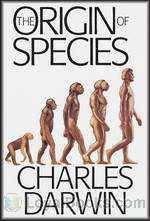 On the Origin of Species by Means of Natural Selection
On the Origin of Species by Means of Natural Selection
Considered to be one of the books that changed the world and how we view ourselves, On The Origin of Species by Charles Darwin was met with incredulous horror when it was first published in 1859. The revolutionary, almost blasphemous ideas it described were seen as antithetical to the existing ideas of Creation contained in the Bible and other religious texts. It was mocked, reviled and the author was personally subjected to vicious persecution by the establishment and theologians. In the years that followed its publication, the book became the subject of furious intellectual and social debate... | |
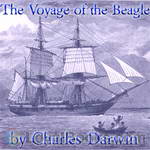 The Voyage of the Beagle
The Voyage of the Beagle
The book, also known as Darwin’s Journal of Researches, is a vivid and exciting travel memoir as well as a detailed scientific field journal covering biology, geology, and anthropology that demonstrates Darwin’s keen powers of observation, written at a time when Western Europeans were still discovering and exploring much of the rest of the world. Although Darwin revisited some areas during the expedition, for clarity the chapters of the book are ordered by reference to places and locations rather than chronologically. With hindsight, ideas which Darwin would later develop into his theory of evolution by natural selection are hinted at in his notes and in the book . | |
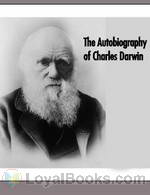 The Autobiography of Charles Darwin
The Autobiography of Charles Darwin
The Autobiography of Charles Darwin is the autobiography of the British naturalist Charles Darwin which was published in 1887, five years after his death. Darwin wrote the book, which he entitled Recollections of the Development of my Mind and Character, for his family. He states that he started writing it on about May 28, 1876 and had finished it by August 3. The book was edited by Charles Darwin’s son Francis Darwin, who removed several passages about Darwin’s critical views of God and Christianity... | |
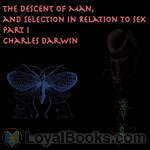 The Descent of Man and Selection in Relation to Sex
The Descent of Man and Selection in Relation to Sex
PART I. THE DESCENT OR ORIGIN OF MAN. Part 1 of 3 of book on evolutionary theory by English naturalist Charles Darwin, first published in 1871. It was Darwin's second great book on evolutionary theory, following his 1859 work, On The Origin of Species. In The Descent of Man, Darwin applies evolutionary theory to human evolution, and details his theory of sexual selection. The book discusses many related issues, including evolutionary psychology, evolutionary ethics, differences between human races, differences between sexes, the superiority of men to women, and the relevance of the evolutionary theory to society... | |
 Formation of Vegetable Moulds through the Action of Worms with Observations on their Habits
Formation of Vegetable Moulds through the Action of Worms with Observations on their Habits
Charles Darwin LL.B F.R.S was the discoverer of evolution and argued the role of "natural selection" in directing the evolution of species. Darwin also had an interest in the formation of soils (moulds) that began relatively early in his life, with a paper "On the Formation of Vegetable Moulds" delivered to the Geological Society of London in 1937. Darwin's last book, The Formation of Vegetable Moulds through the Action of Worms with Observations on their Habits, was completed in 1881. | |
 Origin Of Species by Means of Natural Selection (version 2)
Origin Of Species by Means of Natural Selection (version 2)
This is the 6th and last edition of "On The Origin of Species" with all additions and corrections, often considered the Definitive Edition. | |
By: Charles Dickens | |
|---|---|
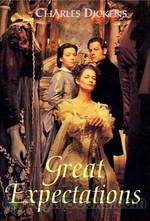 Great Expectations
Great Expectations
From the opening passage itself of Great Expectations by Charles Dickens, the reader is drawn into the world of the hero, Pip, who is at that time, seven years old. The author creates an unforgettable atmosphere: the gloom of the graveyard, the melancholy of the orphan boy, the mists rising over the marshes and the terrifying appearance of an escaped convict in chains. Told in first person (one of the only two books that Dickens used this form for, the other being David Copperfield) Great Expectations is a classic coming of age novel, in which we trace the growth and evolution of Pip or Philip Pirrip to give his full name... | |
 Oliver Twist
Oliver Twist
Set in the first half of the 19th century, the classic novel presents the story of young orphan Oliver Twist, who endures tumultuous events in a society burdened by poverty, crime and malice. After being poorly treated in a workhouse, Oliver escapes to London where instead of finding a better life he ends up tangled in a web of criminal activities. The novel opens with the introduction of Oliver, a waif who has spent his short life living in miserable conditions in a workhouse. Along with other fellow orphans, he is regularly beaten and underfed... | |
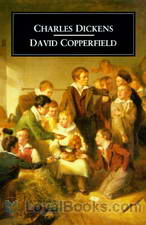 David Copperfield
David Copperfield
Charles Dickens is one of the most appreciated Victorian writers, his novels gaining worldwide recognition by both critics and readers. First published in 1850, David Copperfield begins with avid the tragedy of David's brother dying when David is just a boy. After this episode he is sent by his step-father to work in London for a wine merchant. When conditions worsen he decides to run away and embarks on a journey by foot from London to Dover. On his arrival he finds his eccentric aunt, Betsey Trotwood who becomes his new guardian... | |
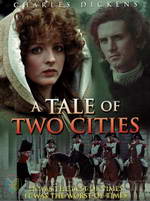 A Tale of Two Cities
A Tale of Two Cities
Its immortal opening lines, "It was the best of times, it was the worst of times..." set the stage for a sweeping narrative that combines drama, glory, honor, history, romance, brutality, sacrifice and resurrection. A Tale of Two Cities by Charles Dickens is one of the most widely read and famous works of historical fiction in the English language. Dickens had recently launched his magazine All the Year Round in 1859. In the same year, he began featuring A Tale of Two Cities in 31 weekly installments in his new magazine... | |
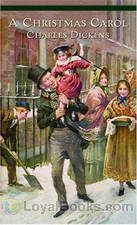 A Christmas Carol
A Christmas Carol
“A squeezing, wrenching, grasping, biting, clutching, covetous old sinner” is hardly hero material, but this is exactly what makes A Christmas Carol by Charles Dickens such an unforgettable book and its hero, Ebenezer Scrooge such an extraordinarily enduring character. In the book's celebrated opening scene, on the night before Christmas the old miser Ebenezer Scrooge sits in his freezing cold counting house, oblivious to the discomfort of his shivering young assistant Bob Cratchit. Scrooge is unremittingly rude to relatives and visitors alike who drop in to convey their Christmas greetings or ask for a contribution to charity... | |
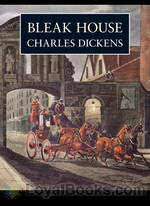 Bleak House
Bleak House
Over twenty consecutive months, Charles Dickens enthralled readers with his monthly installments of the novel Bleak House, a complex and compelling portrayal of the English judicial system. Serialized in his own magazine, Household Words, between 1852 and 1853, the book is deemed to be his finest work and is his ninth novel. Using an innovative literary technique known as “free indirect discourse,” where the narrator himself speaks through the medium of one of his main characters, Dickens uses the heroine Esther Summerson and an unidentified narrator as the vehicle for his story... | |
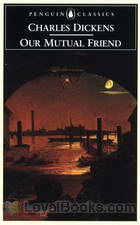 Our Mutual Friend
Our Mutual Friend
As the last published novel of a writer whose career spanned over a dozen novels, innumerable short stories, plays and nonfiction, Our Mutual Friend is indeed a great composition by Charles Dickens. Considered to be one of his most mature, insightful and refined works, Our Mutual Friend takes a long, hard look at what many Victorians loved but hated to admit they did—money. Dickens uses satire, irony, symbolism and biting wit to portray this unlovely picture of a society obsessed with material comforts and its hypocrisy about the means it uses to achieve its ends... | |
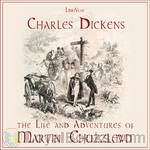 The Life and Adventures of Martin Chuzzlewit
The Life and Adventures of Martin Chuzzlewit
Dickens thought it was “in a hundred points, immeasurably the best” of his stories. Yet it was also one of his greatest flops. Compared to his other novels, The Life and Adventures of Martin Chuzzlewit was a dismal failure in terms of sales and the main reason for Dickens falling out with his long term publisher Chapman & Hall. They invoked a penalty clause and demanded that he pay back a portion of the advance which he refused. Martin Chuzzlewit was also dimly received in Dickens friendly America... | |
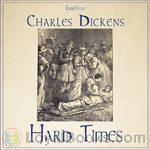 Hard Times
Hard Times
The shortest novel by far of Charles Dickens', Hard Times is also one of his most idea based works. In it, he launches a scathing attack on the prevailing fashion of believing in Utilitarianism, a philosophy that proposed the goal of society should be “the greatest good for the greatest number of people.” Dickens felt that such a philosophy saw people as mere statistics and not as individuals. The novel was published in serial form in his magazine Household Words. It is also the only novel where London is not featured... | |
 The Pickwick Papers
The Pickwick Papers
A sportsman who doesn't hunt; a poet who doesn't write; a lover with no one to love; all three are devoted to their cheerful and benevolent leader, Mr. Pickwick. Join him and his friends, Winkle, Snodgrass, and Tupman, as they tour the country in search of adventures, knowledge, and stories. Along the way, they have their share of mishaps, and meet plenty of interesting characters, both the good and the not so good. (Mr. Pickwick's dedicated manservant, Sam Weller, is a scene-stealer sure to delight just about everybody... | |
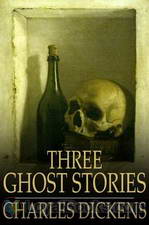 Three Ghost Stories
Three Ghost Stories
As a gifted writer with a strong interest in supernatural phenomena, Charles Dickens produced a string of ghost stories with enduring charm. Three of them are presented here, of which The Signal Man is one of the best known. Though quite different from his most celebrated realistic and humorous critical novels, these ghost stories, Gothic and grotesque as they are, are of good portrayal, and worth a read/listen. Summary by Vivian Chan | |
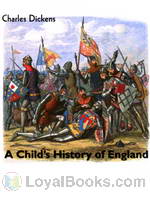 A Child's History of England
A Child's History of England
A Child’s History of England first appeared in serial form, running from January 25, 1851 to December 10, 1853 and was first published in three volume book form in 1852, 1853, and 1854. Dickens dedicated the book to “My own dear children, whom I hope it may help, bye and bye, to read with interest larger and better books on the same subject”. The history covered the period between 50 BC and 1689, ending with a chapter summarising events from then until the ascension of Queen Victoria. | |
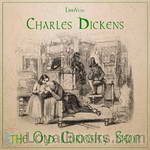 The Old Curiosity Shop
The Old Curiosity Shop
The fourth novel published by Charles Dickens, The Old Curiosity Shop was initially published in weekly installments between 1840 and 1841 and follows the poignant journey of the virtuous young girl Nell and her loving grandfather as they are forced to bear the hardships of life. Dickens cleverly employs contrasting eloquent characters as a utility to bring out the dissimilarity and injustice present in society. The novel introduces orphan Nell Trent and her grandfather, who live in a run-down store that is distinctive for its worthless bits and pieces... | |
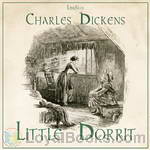 Little Dorrit
Little Dorrit
Originally published in monthly installments between 1855 and 1857, the novel focuses on the various forms of imprisonment, both physical and psychological, while also concentrating on dysfunctional family ties. Accordingly, Dickens avidly criticizes the social deficiencies of the time including injustice, social hypocrisy, the austerity of the Marshalsea debtors’ prison, and bureaucratic inefficiency. The novel kicks off with the introduction of William Dorrit, the oldest prisoner in the Marshalsea prison, who is also referred to as The Father of the Marshalsea... | |
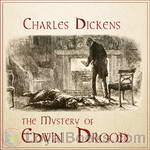 The Mystery of Edwin Drood
The Mystery of Edwin Drood
The Mystery of Edwin Drood is the final novel by Charles Dickens. It is a mystery indeed; the serial novel was just half completed at the time of Dickens’ death – leading to much speculation how it might have ended.The novel is named after Edwin Drood, one of the characters, but it mostly tells the story of his uncle, a choirmaster named John Jasper, who is in love with his pupil, Rosa Bud. Miss Bud is Drood’s fiancée, and has also caught the eye of the high-spirited and hot-tempered Neville Landless! Landless comes from Ceylon with his twin sister, Helena... | |
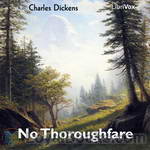 No Thoroughfare
No Thoroughfare
Two boys from the Foundling Hospital are given the same name, with disastrous consequences in adulthood. Two associates, wishing to right the wrong, are commissioned to find a missing heir. Their quest takes them from fungous wine cellars in the City of London to the sunshine of the Mediterranean — across the Alps in winter. Danger and treachery would prevail were it not for the courage of the heroine and the faithful company servant. The story contains crafted descriptions, well-drawn and diverse... | |
 Barnaby Rudge
Barnaby Rudge
One of the two Historical novels Charles Dickens wrote, Barnaby Rudge is set around the ‘Gordon’ riots in London in 1780. The story begins in 1775 with Barnaby, his Mother, and his talking Raven Grip, fleeing their home from a blackmailer, and going into hiding. Joe Willet similarly finds he must leave his home to escape his Father’s ire, leaving behind the woman he loves. Five years later these characters, and many others whose lives we have followed, find themselves caught up in the horrific Protestant rioting led by Sir George Gordon... | |
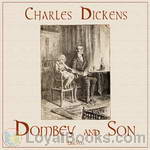 Dombey and Son
Dombey and Son
Dombey and Son is a novel by the Victorian author Charles Dickens. The story concerns Paul Dombey, the wealthy owner of the shipping company of the book’s title, whose dream is to have a son to continue his business. The book begins when his son is born, and Dombey’s wife dies shortly after giving birth. As with most of Dickens’ work, a number of socially significant themes are to be found in this book. In particular the book deals with the then-prevalent common practice of arranged marriages for financial gain... | |
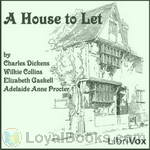 A House to Let
A House to Let
A House to Let is a novella originally published in 1858 in the Christmas edition of Dickens’ Household Words magazine. Each of the contributors wrote a chapter (stories within a story, and in the case of Adelaide Anne Procter, as a story in verse) and the whole was edited by Dickens. The plot concerns an elderly woman, Sophonisba, who notices signs of life in a supposedly empty dilapidated house (the eponymous “House to Let”) opposite her own, and employs the efforts of an elderly admirer, Jabez Jarber, and her servant, Trottle, to discover what is happening within. | |
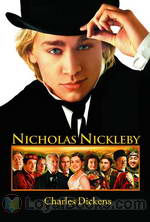 Nicholas Nickleby
Nicholas Nickleby
Nicholas Nickleby is a young Devonshire man of nineteen, handsome and hot headed, devoted to his sister Kate and his parents. Following the death of Nicholas’s father, they find themselves penniless, and travel to London to seek help from his uncle, Ralph Nickleby, a heartless, cunning rogue. He grudgingly finds employment for Nicholas in Dotheby Hall, a school in Yorkshire run by the brutal Mr. and Mrs. Wackford Squeers. Appalled at the condition and treatment of the school children, Nicholas rebels, escaping with Smike, a young man/child who has become devoted to him... | |
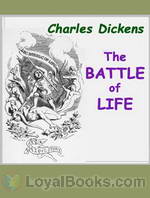 The Battle of Life
The Battle of Life
While "The Battle of Life" is one of Charles Dickens' Christmas Books - his annual release of a story just before Christmas - this one breaks the tradition by not being concerned with Christmas. Rather, its subtitle, "A Love Story", reveals more of the plot. The major events of this book take place on land that once was a battleground. That is just a backdrop for Dickens' idea of the real battle of life - finding and winning the right partner, so that life will go on to the next generation. The family that lives there is rather confused in its affections and intentions regarding who should end up with whom... | |
 The Cricket on the Hearth
The Cricket on the Hearth
The tale of John Peerybingle, the good-hearted carrier, and his young wife Mary ('Dot'), interwoven with the story of poor toymaker Caleb Plummer, his beloved blind daughter Bertha, and the harsh old toy merchant Tackleton, who is due to marry May Fielding, a childhood friend of Dot. Comic relief is provided by Tilly Slowboy, the disaster-prone nursemaid of John and Dot's baby, and Boxer, the family dog.The cricket who chirps on the family hearth assumes fairy form to save the day when disaster looms in the form of a mysterious stranger... | |
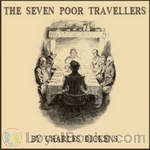 The Seven Poor Travellers
The Seven Poor Travellers
One of Dickens’ Christmas stories, this was first published as part of the Christmas number of Household Words for 1854. The first chapter relates Dickens’ visit to the ancient Richard Watts’s Charity at Rochester. The second chapter is the touching story of “Richard Doubledick”, which Dickens supposedly told the travellers, and Dickens’ journey home on Christmas morning provides the short concluding chapter. | |
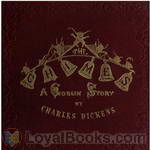 The Chimes
The Chimes
The Chimes: A Goblin Story of Some Bells that Rang an Old Year Out and a New Year In is the second of Charles Dickens' Christmas books, published in 1844. Its contemporary setting is the "Hungry Forties", a time of social and political unrest, and the book has a strong moral message. It remained popular for many years, although its fame has since been eclipsed by that of A Christmas Carol, the first of the series. Our hero Toby ("Trotty") Veck is a poor but hard-working man, whose beloved daughter Meg is due to marry on New Year's Day... | |
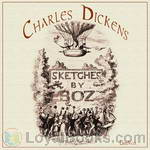 Sketches by Boz: Illustrative of Every-Day Life and Every-Day People
Sketches by Boz: Illustrative of Every-Day Life and Every-Day People
"Sketches by "Boz," Illustrative of Every-day Life and Every-day People (commonly known as Sketches by Boz) is a collection of short pieces published by Charles Dickens in 1836 accompanied by illustrations by George Cruikshank. The 56 sketches concern London scenes and people and are divided into four sections: "Our Parish", "Scenes", "Characters", and "Tales". The material in the first three of these sections is non-fiction. The last section comprises fictional stories. Originally, the sketches were published in various newspapers and periodicals from 1833-1836." | |
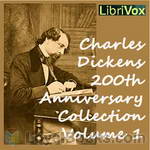 Charles Dickens 200th Anniversary Collection Vol. 1
Charles Dickens 200th Anniversary Collection Vol. 1
The Charles Dickens 200th Anniversary Collection comprises short works - fiction, essays, poetry, letters, magazine articles and speeches - and each volume will be a pot pourri of all genres and periods of his writing. This first volume is released on Dickens' 200th birthday, February 7th 2012. Further volumes will follow during the anniversary year.Volume 1 includes short stories including, amongst others, The Holly Tree, the first part of Holiday Romance and three pieces from Mugby Junction.Some... | |
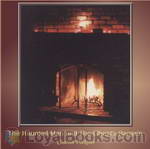 The Haunted Man and the Ghost's Bargain
The Haunted Man and the Ghost's Bargain
The Haunted Man and the Ghost’s Bargain, A Fancy for Christmas-Time, (better known as The Haunted Man and the Ghost’s Bargain) is a novella by Charles Dickens first published in 1848. It is the fifth and last of Dickens' Christmas novellas. The story is more about the spirit of the holidays than about the holidays themselves, harking back to the first of the series, A Christmas Carol. The tale centers around a Professor Redlaw and those close to him. | |
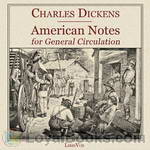 American Notes for General Circulation
American Notes for General Circulation
American Notes for General Circulation is a travelogue by Charles Dickens detailing his trip to North America from January to June, 1842. While there he acted as a critical observer of these societies almost as if returning a status report on their progress. This can be compared to the style of his Pictures from Italy written four years later, where he wrote far more like a tourist. His American journey was also an inspiration for his novel Martin Chuzzlewit. | |
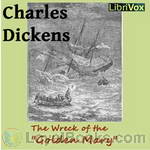 The Wreck of the Golden Mary
The Wreck of the Golden Mary
A short story of a ship wreck in 1851 trying to round Cape Horn on its way to the California gold fields. Poignant and well written. ( | |
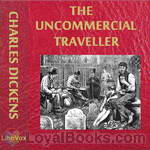 The Uncommercial Traveller
The Uncommercial Traveller
The Uncommercial Traveller is a collection of literary sketches and reminiscences written by Charles Dickens. In 1859 Dickens founded a new journal called All the Year Round and the Uncommercial Traveller articles would be among his main contributions. He seems to have chosen the title and persona of the Uncommercial Traveller as a result of a speech he gave on the 22 December 1859 to the Commercial Travellers' School London in his role as honorary chairman and treasurer. The persona sits well with a writer who liked to travel, not only as a tourist, but also to research and report what he found; visiting Europe, America and giving book readings throughout Britain... | |
 The Strange Gentleman
The Strange Gentleman
Before he became a novelist, Dickens wrote several successful plays. This one from 1836, his first, he called, "A Comic Burletta in Two Acts". Characters arrive at a village inn called "The St. James Arms" and much confusion ensues. | |
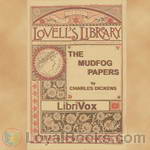 Mudfog and Other Sketches
Mudfog and Other Sketches
The Mudfog Papers was written by Victorian era novelist Charles Dickens and published from 1837–38 in the monthly literary serial Bentley's Miscellany, which he then edited. They were first published as a book as 'The Mudfog Papers and Other Sketches. The Mudfog Papers relates the proceedings of the fictional 'The Mudfog Society for the Advancement of Everything', a Pickwickian parody of the British Association for the Advancement of Science founded in York in 1831, one of the numerous Victorian learned societies dedicated to the advancement of Science... | |
 Pictures from Italy
Pictures from Italy
e: Dickens takes time off his novels to give an account of travels which he and his family undertook in France and Italy. There are vivid descriptions of the places, but also of the people and their lives. | |
 David Copperfield (version 3)
David Copperfield (version 3)
David Copperfield, like all of Dickens' novels, is filled with many memorable characters from all members of society. Here we have, for example, the virtuous, but relatively poor, Mr. Peggotty beside the grasping and greedy and vengeful and more middle-class Heep, but also beside Julia Mills whose only desire is also for money, which she possesses to excess . And David Copperfield, like other of Dickens' works, emphasizes thematically that love and sacrifice are better than greed and arrogance. But this novel is more autobiographical than his others becomes David Copperfield , and, of course, David becomes a famous writer, in fact, known worldwide, like Charles Dickens... | |
 Christmas Carol (Version 13)
Christmas Carol (Version 13)
Ebenezer Scrooge is a covetous, miserable old man who lives his life apart from his fellow man and is incapable of showing love or understanding towards them. On Christmas Eve he is visited by three ghosts who show him the error of his ways. | |
 Barnaby Rudge (version 3)
Barnaby Rudge (version 3)
The Protestant Sir John Chester and the Catholic Geoffrey Haredale have been feuding for years. In "Romeo and Juliet" fashion, Chester's son and Haredale's niece wish to marry, but their relatives oppose the union. A tale of love and intrigue set against the historical events of 1780, when an anti-Catholic mob caused more damage to London than had ever been seen before. And the simple young man Barnaby who becomes caught up in events he does not quite understand. | |
 Oliver Twist (version 3)
Oliver Twist (version 3)
Oliver Twist was published in 1838 as a three volume book. The novel was the first of Dickens' works to realistically portray the degradation and impoverishment of the London underworld and its denizens. Dickens utilises the environment and characters to illustrate his belief that poverty leads to crime. The plot of this novel centres around and follows the journey of the parish boy "Oliver Twist." Oliver has been in the parish orphanage all his short life, a place overcrowded and constantly short of food... | |
 Oliver Twist (version 7)
Oliver Twist (version 7)
Orphan boy Oliver is forced into child labor at an early age, and after a simple plea for more food, finds himself alone in the streets of London, where ultimately he becomes the center of attention for a gang of pickpockets. - Summary by Brad "Hamlet" Filippone | |
 Christmas Carol (Version 11)
Christmas Carol (Version 11)
The classic Christmas story of Ebenezer Scrooge, an elderly miser who is visited by the ghost of his former business partner Jacob Marley and the spirits of Christmas Past, Present and Yet to Come. The result of their visit shows that redemption is achievable for even the worst of us. - Summary by wikipedia and jvanstan | |